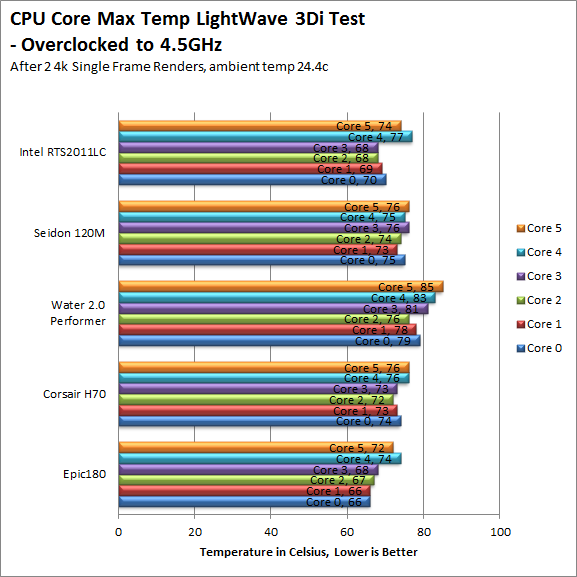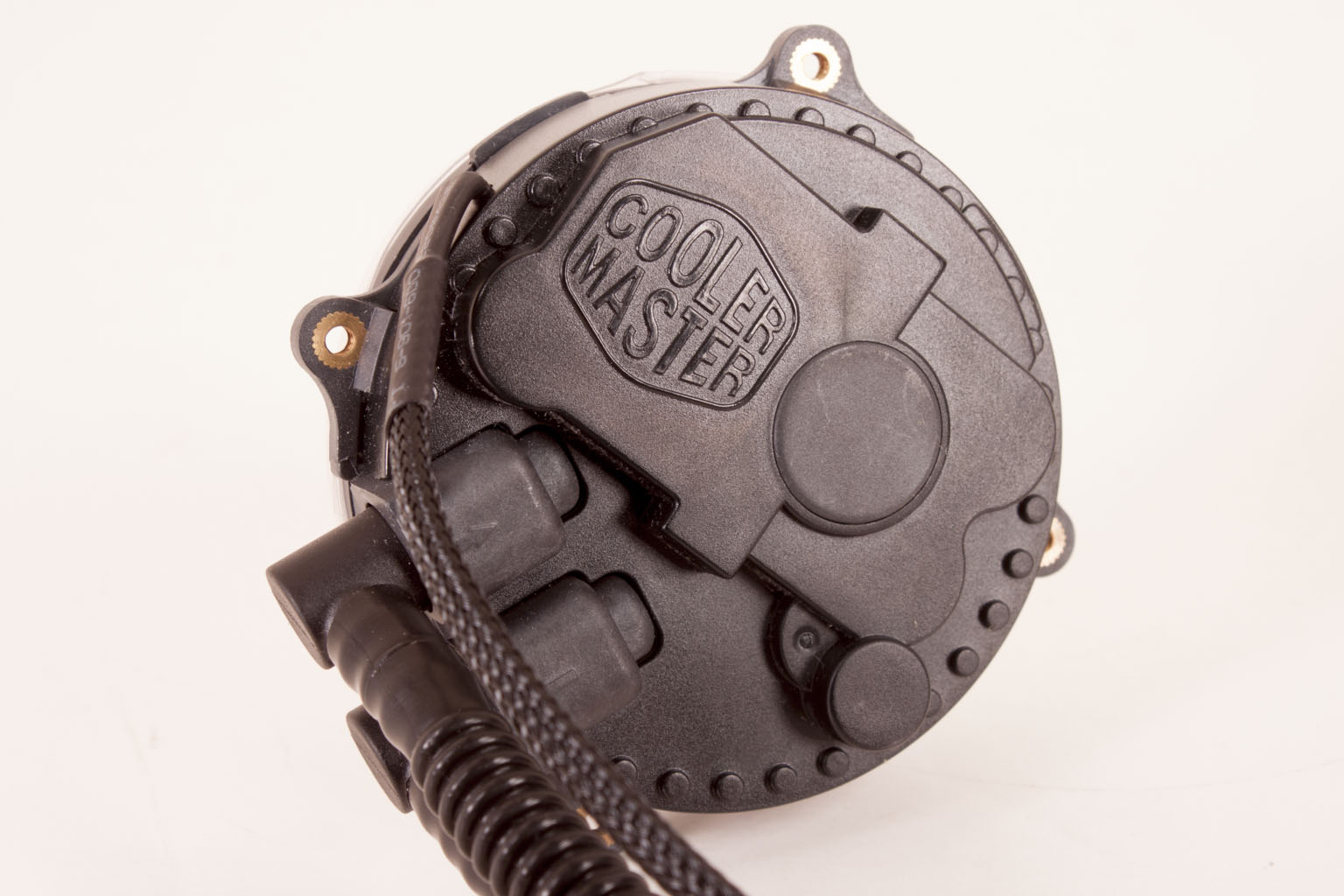Installation -
To further enhance the fact that the Seidon is not an Asetek head the installation is completely different. Instead of the tabbed mount and head that we see on most other coolers you have different brackets that attach directly to the head with small screws. This is very similar to what you see with Cooler Master’s air coolers. Once you get the mounting arms in place you getting the Seidon firmly installed is almost no work at all. You can see how simple it is in the video we have posted below.
Performance -
To see how well the Cooler Master Seidon 120M is at cooling we compared it to four other self-contained cooling units. The MAINGEAR Epic 180, Corsair H70, Thermaltake’s Water 2.0 Performer, and Intel’s own water cooling rig for the new Sandy Bridge E CPUs the RST2011LC. To get the best idea of how each of these performs we set up a battery of three CPU intensive tests. Each is capable of bringing the CPU to 100% for an extended period of time. Each of these tests was run twice at Stock Speeds and then again overclocked to 4.5GHz. We ran the two test runs back-to-back and then the maximum recorded temperature for each core was recorded. To record these we used CoreTemp. At stock speeds the Seidon does a very good job of keeping your CPU cool, in fact it is better than some of the coolers with a thicker radiator (which can mean more cooling area). When overclocked and at stock speeds the Seidon starts to slip, but not too badly; this is probably due to the cooling area in the radiator becoming saturated with the extra heat. We will see how it does under stress below.
At stock speeds the Seidon does a very good job of keeping your CPU cool, in fact it is better than some of the coolers with a thicker radiator (which can mean more cooling area). When overclocked and at stock speeds the Seidon starts to slip, but not too badly; this is probably due to the cooling area in the radiator becoming saturated with the extra heat. We will see how it does under stress below.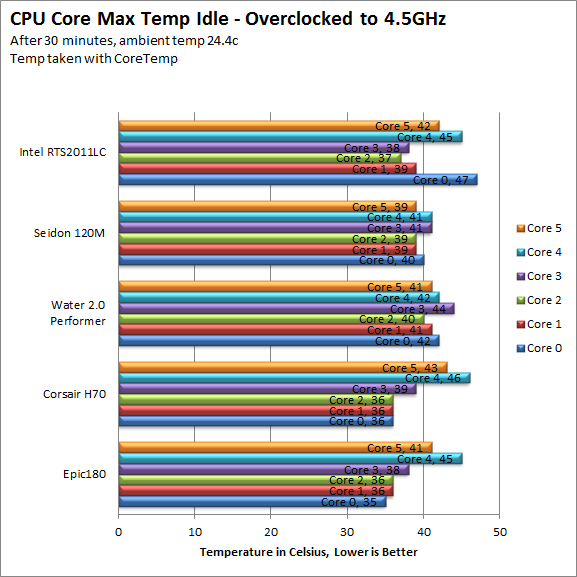
Our in lab tests are listed below;
3DMark 11 -
3DMark 11 is the other Futuremark test that we run on our motherboards. This test simulates the typical tasks that a GPU (and system) would have to perform to provide you with a good gaming experience. It is based on the DX9, DX10 and DX11 engines but can only be installed on Windows Vista or later. The suite of tests covers DX9, DX10, and of course DX11 rendering; it also covers AI computations and physics. That’s right I said Physics the latest version of 3DMark uses a Havok physics engine. This removes the advantage that nVidia had with 3DMark Vantage. Here the Seidon did well keeping things cool at stock speeds but when we pushed the 3960X to 4.5GHz the extra voltage needed to reach this speed seems to be more than the combination of pump, radiator and fan can deal with. The temps are not bad; in fact they are very close to other solutions that technically have more cooling surface in the radiator.
Here the Seidon did well keeping things cool at stock speeds but when we pushed the 3960X to 4.5GHz the extra voltage needed to reach this speed seems to be more than the combination of pump, radiator and fan can deal with. The temps are not bad; in fact they are very close to other solutions that technically have more cooling surface in the radiator.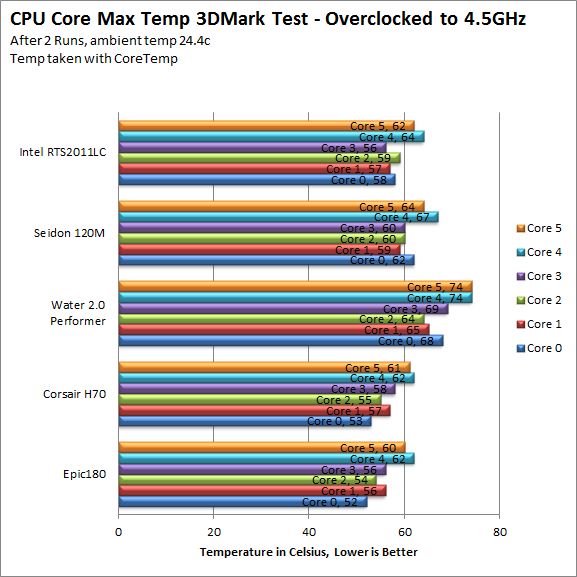
HyperPi 0.99b -
HyperPi is a front end application that allows you to easily run multiple instances of the SuperPi application. SuperPi, for those that are not familiar with it, is an application that measures the time it takes to calculate the number Pi out to as many as 32 million places. This calculation is then checked and run multiple times (up to 24 for a 32M run). This test stresses the CPU, Memory and HDD as data is handed off between the three. If there is a weak link, HyperPi will show it. For our testing we run the 32M test on as many cores (and threads) as the CPU has available. HyperPi is one of those tests that can really push your CPU and also get it heated up. Although some like running Prime with small FFTs we have found that HyperPi is a better thermal simulation for real world testing. Here we see that the Seidon does well again, it is not the best cooler in the group, but it does very well for its design.
HyperPi is one of those tests that can really push your CPU and also get it heated up. Although some like running Prime with small FFTs we have found that HyperPi is a better thermal simulation for real world testing. Here we see that the Seidon does well again, it is not the best cooler in the group, but it does very well for its design.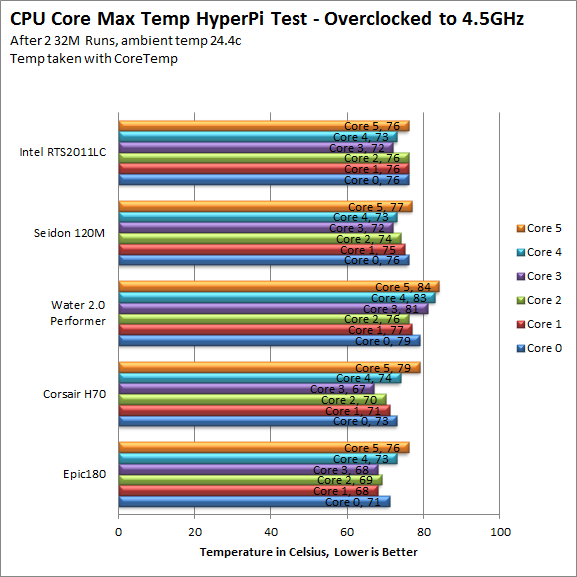
Lightwave 3D 9.6 x64 -
Lightwave is another industry standard application for 3D animation and rendering. It has a large tool base and the rendering engine is highly threaded (when using the right render model). This application is also capable of expanding to 4k resolutions as well as ray tracing for rending the light sources. For our testing we use frame 470 of the Pinball scene found in the LW 9 Content folder. This uses the newer perspective camera that is better suited to a multi-CPU/Core environment. This camera style also uses ray tracing and a much improved anti-aliasing method. Settings are shown below in the attached screen shot. 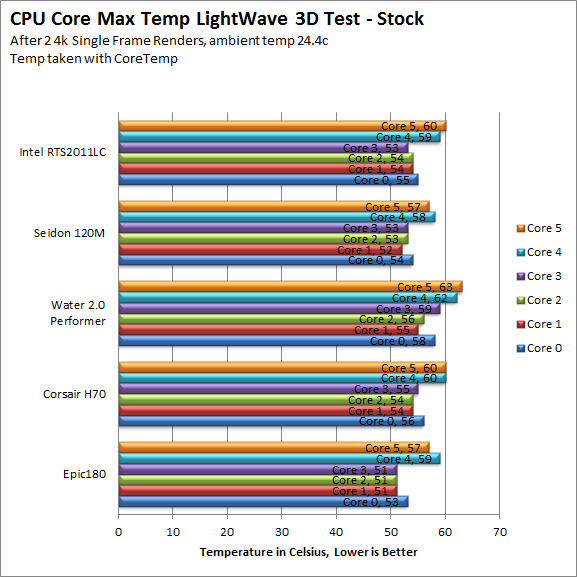 The Seidon does very well again in our testing with temps that were much lower than we expected given the design. Even overclocked when we expected the system to become saturated it held its own and gave a good fight to the other coolers in our test group.
The Seidon does very well again in our testing with temps that were much lower than we expected given the design. Even overclocked when we expected the system to become saturated it held its own and gave a good fight to the other coolers in our test group.